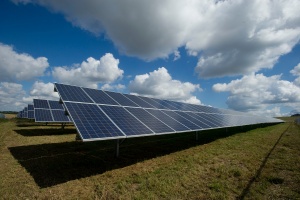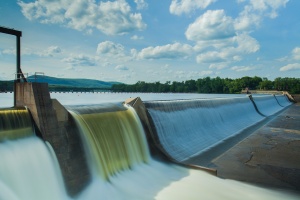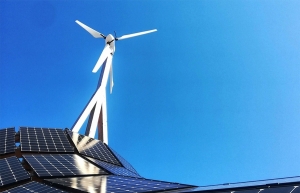Vietnamese power sector is a beacon of prospects
The plan aims to achieve balanced development of power sources across the regions, ensuring supply-demand parameters. It also focuses on maintaining feasibility, synchronisation, and flexibility among various power sources and grid development.
| Vaibhav Saxena, lawyer, Vilaf |
The plan is committed to tracking progress and resources for implementing priority schemes and projects on refining policies and strengthening the scientific and technological capacity of the entire power industry, with a forecasted land requirement for 90,300 hectares by 2030. It outlines a diverse mix of power sources by 2030, including domestic gas, liquefied natural gas (LNG), coal, co-generation, hydropower, and renewable energy sources such as wind, hydro, biomass, and solar.
The total capacity of these sources is expected to reach significant figures, with coal and hydropower leading the way. From this, it is evident that the government has ambitious plans for the primary period of PDP8 towards 2030, to be revisited on a five-year interval as per the planning laws to be in conformity with the socioeconomic development during each period.
However, targets seem quite challenging when looking to the remaining period, which leaves just over six years for investors to get projects moving, while struggling for financing streams and further expecting policy clarity on certain upcoming policies such as the direct power purchase agreement regime, guidance of rooftop solar, more technically and financing pro sound regulation refinements to support the planned development for wind offshore and LNG-to-power, gas pipelines, pilot projects, and more.
This is including, but not limited to, implementation of the Vietnam wholesale electricity market and auction mechanism to smooth out investor selection. On the sidelines, it appears that the carbon credit market to implement nationally determined contributions and the trading and exchange of renewable energy certificates are stressed by government leaders, whereas, foreign-invested enterprises are under global pressure for green production and environmental, social, and governance compliance by the origin/importing countries.
The PDP8 implementation plan also includes the development of two inter-regional renewable energy industrial and service centres by 2030. This signals that Vietnam is poised to have a significant impact with the integration of renewable energy into its energy mix.
These centres will be located up and down the country, and will also set up equipment manufacturing facilities for renewable energy development, seaport services, logistics for construction, installation, and more. Strategic placement of the centres indicates further energy security boost for the domestic consumption as well as exports, when in parallel running through the coastlines to support territorial limits.
Current investment estimates look appealing, but will need an apt policy plinth to realise the planned potential. Vietnam has already adopted the global minimum tax regime covering both qualified domestic minimum top-up tax and the income inclusion rule, and to compensate for that, the Ministry of Planning and Investment is tasked to formulate support policies in order to keep the investment climate competitive while aligning with macroeconomic spheres.
With the plan, Vietnam does remain optimistic to maintain its power momentum, offering enormous economic and investment prospects. It invites participation from economic stakeholders for energy industry development, promising a bright future for the investors, lenders and the entire industry eyeing for Vietnam to be the new economic hub of Southeast Asia.
On one hand, speedy actions have been taken on a theoretical basis from the policy front. On the other hand, practical implementation is to a greater extent is expected to be explored to achieve the set targets with the teaming up of the relevant stakeholders.
 | Vietnam prioritises solar energy development in the north The nation is introducing a revised pricing structure to boost solar energy projects in its northern regions, reflecting the area's lower solar radiation intensity compared to its central and southern counterparts. |
 | EVN proposes accelerated electricity imports from Laos Amidst a looming power deficit, Vietnam Electricity (EVN) is fostering strategic partnerships with Laotian electricity suppliers to ensure the country's energy security. By leveraging competitive pricing structures, EVN proposes accelerating the imports from Laos. |
 | New PDP8 implementation plan brings investment opportunities On April 1, Deputy Prime Minister Tran Hong Ha approved the implementation updates for Vietnam's Power Development Plan VIII (PDP8), which aims to help build strategic objectives, ensure national energy security, and foster investment across all economic sectors. Senior associate Nguyen Thi Cuc Vi and trainee associate Trinh Linh Chi of Dentons LuatViet explain further. |
 | Vietnam explores bypassing EVN on direct rooftop solar sales Rooftop solar, waste-to-energy, and biomass power projects may soon bypass state utility EVN for direct sales, according to Deputy Prime Minister Tran Hong Ha. |
What the stars mean:
★ Poor ★ ★ Promising ★★★ Good ★★★★ Very good ★★★★★ Exceptional
 Tag:
Tag:
Related Contents
Latest News
More News
- TCP Group partner with VNUS to launch water conservation project (December 25, 2025 | 14:00)
- Heavy industries set for pilot greenhouse gas quotas (December 25, 2025 | 10:00)
- Swedfund invests in MSME growth and climate action in Vietnam (December 19, 2025 | 11:42)
- GreenYellow brings solar energy to light up remote schools in Tuyen Quang province (December 19, 2025 | 08:00)
- Charge+, Grab partner to develop EV charging network in Vietnam (December 18, 2025 | 17:11)
- Linking sci-tech and innovation to Vietnam’s net-zero future (December 18, 2025 | 14:31)
- Driving double-digit growth through green and circular transformation in Vietnam (December 17, 2025 | 09:00)
- Standard Chartered and ACCA deepen collaboration to develop Vietnam’s talent for a sustainable future (December 15, 2025 | 18:18)
- Schaeffler reports strong early output from Dong Nai solar project (December 12, 2025 | 15:16)
- Forestry conference highlights biodiversity and sustainability goals (December 09, 2025 | 13:35)






















 Mobile Version
Mobile Version